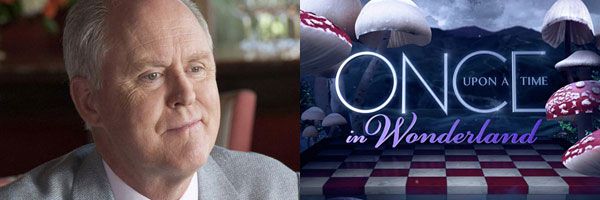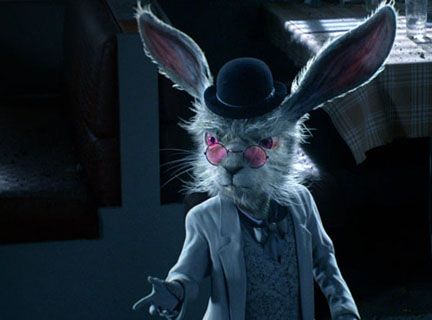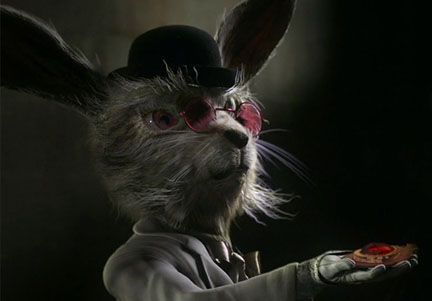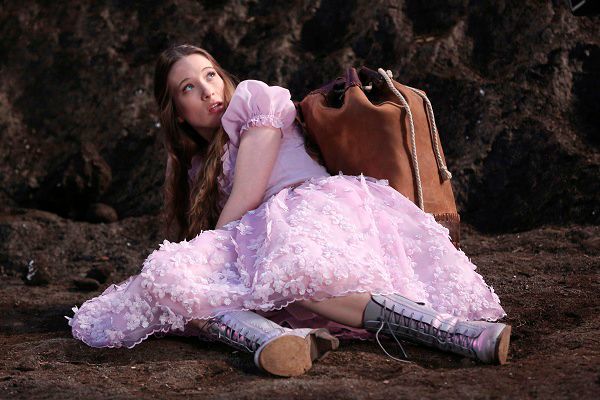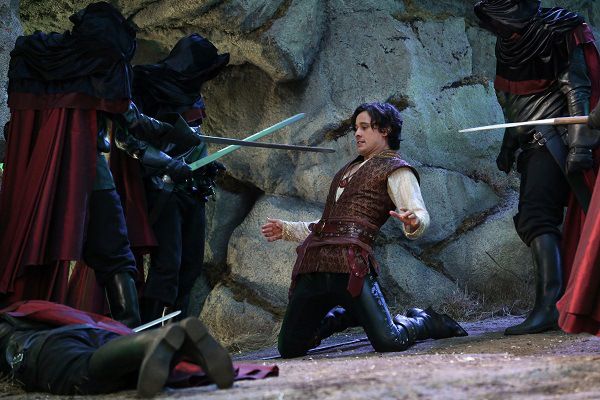On the ABC fantasy series Once Upon A Time in Wonderland, Alice (Sophie Lowe) tells an impossible tale of a strange new land that exists on the other side of a rabbit hole, with an invisible cat, a hookah-smoking caterpillar and playing cards that can talk. She was ready to put it all behind her, especially the painful memory of the genie -- the handsome and mysterious Cyrus (Peter Gadiot) -- that she fell in love with and lost forever, until the Knave of Hearts (Michael Socha) and the White Rabbit (voiced by John Lithgow) suddenly show up to take her back to Wonderland.
During this recent exclusive phone interview with Collider, actor John Lithgow talked about how he immediately jumped at the chance to voice such a unique and unusual character, why he loves being a part of family entertainment, how he finds his inner White Rabbit, how he feels like he can take about 3% of the credit for the final product, that nothing on this show will turn out how you expect, and the process of being able to record from anywhere, at anytime. Check out what he had to say after the jump, and be aware that there are some spoilers.
Collider: This show is just so much fun to watch!
JOHN LITHGOW: I have to agree. And that’s not always true of things that I’m in because I hate watching myself, but this is great.
When you were approached about voicing the White Rabbit for a fantasy series based on Alice in Wonderland, did you think it was crazy, or did you think it just sounded like so much fun?
LITHGOW: I said yes, immediately. It’s a lovely idea. I knew a lot about Once Upon A Time, so I knew they would do it very stylishly. But beyond anything else, good lord, I get to play a major role without ever showing up. It’s the coolest job I’ve ever had. Recording the voice of the White Rabbit is wonderful fun, and it only lasts an hour or so, every few weeks. It’s great!
You have grown children now, but do you take your grandchildren into consideration, when deciding to do a project like this?
LITHGOW: Yes, always. I do a lot of entertaining for kids, and I write books and do concerts for kids, so it’s right in my wheelhouse. But what’s nice about Once Upon A Time in Wonderland is that it’s cross-over entertainment that families can watch with their kids. That’s something I always loved about 3rd Rock from the Sun. Grown adults often tell me that they used to sit, as children with their parents, and watch 3rd Rock from the Sun, and they would all enjoy it for completely different reasons. I think that’s part of the magic of the show.
Actors typically say that they accept a role because there’s something about the character that they can identify with, or they feel there’s something they can bring to the role. So, how did you find your inner White Rabbit?
LITHGOW: Oh, I identify deeply with the rabbit species. The rabbit is just a wonderful, impish character. He’s not human, but he interactions with people. He’s just a devilish, comic little creature. I don’t know. It came very quickly and easily. I believe they’ve given the rabbit a good deal more of a character and personality than he ever had in Lewis Carroll’s Alice in Wonderland. As I recall, his only identifying characteristic was that he always though the was late. This rabbit is politick, devious, sentimental, untrustworthy and unpredictable. He has all sorts of wonderful qualities, and he’s slightly hysteric, as most rabbits are. He’s easily frightened, and he darts around. You make the rabbit into a really anthropomorphic character and he has a lot more going for him than he ever had in Lewis Carroll’s work.
It’s so cool to see how animated he is and how much facial expression he has.
LITHGOW: You’re complimenting me, but I’m just a part of a team that created that rabbit. I happen to agree with you, but I was seeing the rabbit for the first time, when I saw the show. I do the voice to picture. They show me what they have shot. But, the rabbit is not finished yet. It’s hilarious. I see an extremely unfinished version of what you’ve seen. The only thing that’s really done are the performances of the human beings. All the sets around them are very temporary, and the rabbit is sometimes just a little motorized vehicle with a pole with a red tip, so they have something to look at. Or sometimes he’s a white cut-out that moves a little bit, but has no facial expressions. So, I do all that I can with the voice, and the animators take what I’ve done and give it this marvelous life. All those little expressions you see, the drooping ears and his body language is all theirs. That all happens after I record my voice. They do have a little camera that watches what I do, so I can take maybe 3% credit for what they come up with.
Do you actually see yourself in the rabbit, at all, or do you feel any sense of ownership for this character, even though you’re so separated from it?
LITHGOW: Well, I probably feel more ownership than I actually deserve. I’m absolutely delighted by what I see. I watched it like everybody, on Thursday night, and it was brand new to me. I was absolutely delighted with what they’d done. Those little red eyes, peaking out from behind his spectacles, I didn’t know that was going to happen. And then, there were all of those wonderful little pouts and hesitations and shaking of his head. It was all new. But, I did know that they would want a lot of vocal behavior that they could animate to, so with a lot of his stammering, and huffing and puffing, and shaking his jowls, I tried to give them as much of that as I could. Having done some animation voice work before, I know that animators just love that kind of stuff. They love little sounds that they can animate to. So, the next time you watch him, watch for all of his little sounds. They take that and know exactly what to do with it.
We learned in the pilot that the White Rabbit is not just out to help Alice. What can you say about what’s to come for him, and where his true loyalties lie?
LITHGOW: I’m not going to give away anything. I just will tell you that there’s a lot going on, and there are a lot of surprises. The nice thing about what you have seen of the rabbit, so far, is that you haven’t seen much of him. There’s something going on, but you don’t know what it is, and you’re not supposed to do what it is. Succeeding episodes will illuminate you. That’s all I’ll say.
So, it’s safe to say that nothing is what you expect it to be, on this show?
LITHGOW: Why didn’t I think of that?! The great thing about it is that they’ve taken Lewis Carroll and spun it into a TV series with storylines that have been set in motion, that will go on for a long time. They are marvelous storytellers, these writers. It goes so far beyond what we know of Alice in Wonderland. I feel like I’m being extremely coy with you, but I’m under strict instructions.
Is this the ideal job, in the sense that it doesn’t prohibit you from working on other projects, at the same time?
LITHGOW: Oh, it certainly is. It gets problematic sometimes. I did some of the White Rabbit up in Calgary, on a Sunday, while I was doing a movie for Christopher Nolan (Interstellar). I did some of the White Rabbit in New York, at a sound studio, while I was doing a little independent film there. And I had to do it at 11 in the morning, before being picked up at noon to work until 1 am. It’s crazy. I get these calls from my agent saying, “They need 20 minutes of your time, in the next 18 hours.” They are on a very hard schedule, and they work very last-minute and very fast. So, it is an ideal job, in that I have a wonderful part that I spend very little time performing, but I have to do it at the most inconvenient moments and in the most unlikely places.
Once Upon A Time in Wonderland airs on Thursday nights on ABC, and you can learn more about the show at www.abc.com/onceuponatimeinwonderland.

